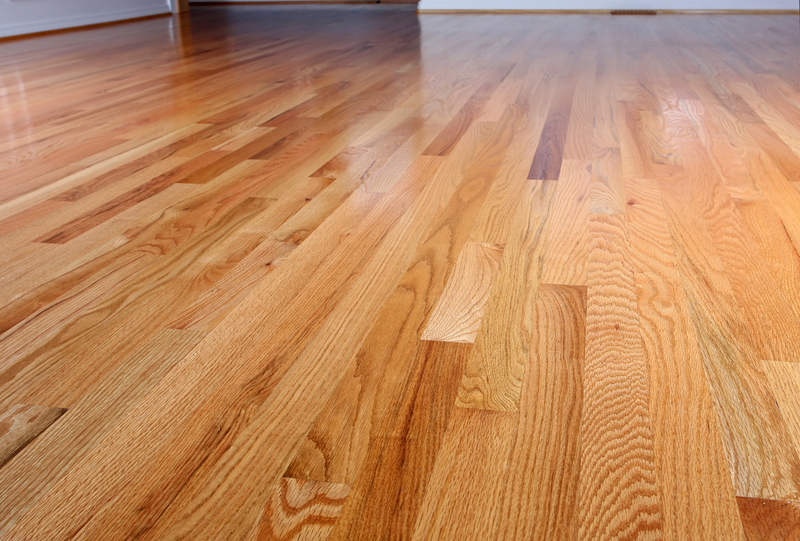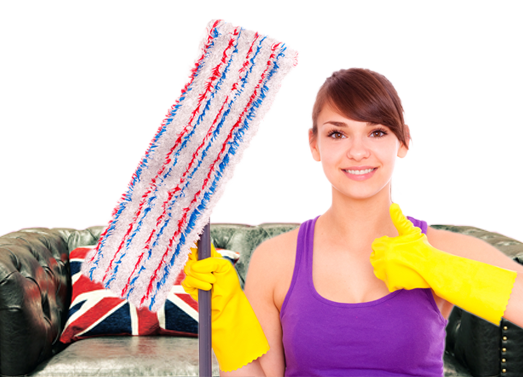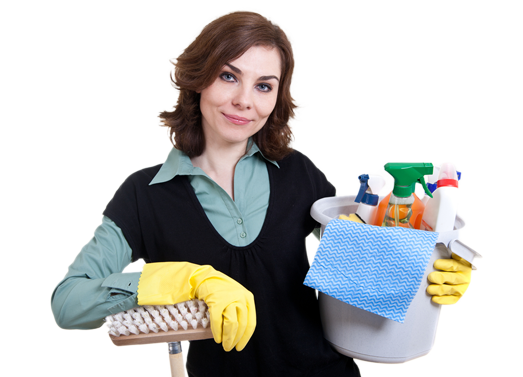Your Go-To Strategy for Clean uPVC Window Frames
Posted on 15/09/2025
Your Go-To Strategy for Clean uPVC Window Frames
Clean uPVC window frames are essential for keeping your home looking modern and well-maintained. Over time, dust, grime, and various pollutants can settle on these frames, making them appear old and affecting the overall aesthetic of your windows. In this comprehensive guide, we'll share a wealth of expert tips and strategies for maintaining those uPVC windows in peak condition.

Why Keeping uPVC Window Frames Clean Matters
With their durability and low-maintenance nature, uPVC window frames have become a popular choice for homeowners. However, cleaning uPVC windows regularly can yield several benefits:
- Enhanced appearance: Dirty frames can make the whole window look uncared for.
- Increased lifespan: Dirt and debris can cause premature wearing. Regular cleaning protects your investment.
- Better insulation: Build-up around seals can affect insulation, letting in drafts.
- Improved hygiene: Mould and mildew can form on neglected frames, affecting the air quality in your home.
Understanding uPVC: What Makes It Special?
Before unpacking our top-notch cleaning strategy for uPVC windows, it's helpful to understand what makes uPVC frames unique. uPVC stands for unplasticised polyvinyl chloride, a rigid and highly durable synthetic material. These window frames are:
- Resistant to weather and chemical damage
- Non-corrosive and doesn't rust
- Require minimal maintenance compared to wooden or aluminium frames
- Cost-effective and energy-efficient
Despite their robust qualities, even the best uPVC window frames demand regular cleaning to prevent dirt from detracting from their appearance or function.
Essential Tools and Products for Cleaning uPVC Window Frames
Assemble the following cleaning supplies to clean uPVC frames efficiently and without risk of damage:
- Soft microfiber cloths - for gentle, scratch-free cleaning
- Non-abrasive sponge - for tackling more stubborn spots
- Bowl of warm water - your primary cleaning base
- Mild dish soap - ideal for removing grease and surface dirt
- Spray bottle - to help apply cleaning solution evenly
- Soft-bristled brush or old toothbrush - for cleaning grooves, corners, and edges
- White vinegar - a natural solution for tougher grime and small amounts of mould
- Dry towel - for buffing frames dry and streak-free
Avoid using harsh chemicals, abrasive creams, scouring pads, or steel wool as these can scratch or discolour uPVC surfaces.
A Step-by-Step Guide: How to Clean uPVC Window Frames Like a Pro
To achieve spotless uPVC frames, follow this detailed, easy-to-replicate routine:
Step 1: Remove Loose Dust and Debris
- Start dry: Use a microfiber cloth or a vacuum with a soft brush attachment to wipe away cobwebs, dust, and larger debris from the frames.
- Don't forget the tracks: Window tracks can harbour a surprising amount of dirt. Clean these with a dry brush before getting anything wet.
Step 2: Prepare Your Cleaning Solution
- Mix a few drops of mild dish soap into a bowl of warm water.
- Alternatively, combine equal parts white vinegar and water for a more natural clean, especially if there's visible mould or mineral stains.
Step 3: Wipe Down the Frames
- Dampen your microfiber cloth or non-abrasive sponge in the soapy water solution.
- Wipe the entire uPVC frame, focusing on corners and grooves, where dirt often accumulates.
- For stubborn stains or marks, lightly scrub with a soft-bristled brush or old toothbrush.
Step 4: Tackle Tough Grime and Stains
- White marks or yellowing can sometimes occur on neglected frames. A paste of bicarbonate of soda (baking soda) and water can help lift more persistent stains--gently rub it onto the area with your soft cloth, then rinse thoroughly.
- For mould: A mixture of white vinegar and water (never bleach, as it can damage uPVC) is effective. Apply, leave for 10 minutes, then wipe clean.
Step 5: Rinse and Dry Thoroughly
- Wipe down the frames again with a clean, damp cloth to remove any soap, vinegar, or baking soda residue.
- Buff with a dry towel to prevent streaks and water spots.
Step 6: Polish for Extra Shine
- Most uPVC doesn't strictly need polishing. However, for extra shine, you can use a purpose-made uPVC cleaner (check manufacturer recommendations) or a tiny drop of baby oil on a soft cloth.
- Buff gently for a brilliant, renewed finish.
Pro Tips for Maintaining Pristine uPVC Window Frames
- Frequency is key: Clean your uPVC windows every 2-3 months, or more often if you live near heavy traffic or in a high-pollen area.
- Spot-clean spills quickly: Wipe up bird droppings, sap, or insects before they harden and become tricky to remove.
- Check weather strips and seals: While cleaning, inspect for any damage to seals or gaskets around your uPVC window frames.
- Keep window sills, ledges, and nearby guttering free of leaves or dirt, as these can transfer grime onto your windows.
Common Mistakes to Avoid When Cleaning uPVC Frames
- Avoid bleach and strong solvents: These powerful cleaners can corrode or permanently discolour uPVC surfaces.
- No abrasive pads or powders: These scratch the outer layer, making the frames look dull and attracting more dirt.
- Don't use coloured cloths that might bleed dye onto the frame, especially when using vinegar or other cleaning agents.
- Skipping the rinse: Always rinse after cleaning to prevent residue build-up.
What If Your uPVC Frames Are Yellow or Stained?
Yellowing occurs mainly in older uPVC window frames because of prolonged exposure to sunlight or air pollution. While newer uPVC formulas are more resistant, here are some steps to try:
- Baking soda paste: Mix baking soda with a little water, apply with a soft cloth, then rinse off.
- White vinegar: Boosts cleaning power and can reduce mild yellowing.
- uPVC cream cleaner: Purchase specialty uPVC cleaning creams designed for stained or discoloured frames.
- Professional restoration: If yellowing is severe, some specialists can restore uPVC colour with advanced cleaning solutions or repainting products.
Note: Avoid aggressive sanding or harsh chemicals, which can do more harm than good.
Should I Use Commercial uPVC Cleaners?
While your DIY method using soap, vinegar, and baking soda covers most scenarios, there are times when a commercial uPVC window frame cleaner is beneficial. These cleaners are specifically formulated for stubborn stains, ingrained dirt, or restoration. When choosing such products:
- Always follow guidelines and test on a small, inconspicuous area first.
- Never use if the manufacturer warns against it for your window's finish or warranty.
- Avoid silicone-based products as a routine cleaner, which can leave greasy films attracting more dirt.
Eco-Friendly Solutions for Cleaning uPVC Windows
Looking for a greener approach to keeping your uPVC frames clean? Here are some eco-friendly cleaning alternatives:
- Baking soda and lemon juice: Gently abrasive and natural disinfectant properties.
- Distilled white vinegar and water: Dissolves light mineral deposits and cuts through grease naturally.
- Castile soap: Plant-based cleaner safe for homes with pets and children.
How to Clean uPVC Windows from the Inside and Outside
Many homeowners focus on the interior, forgetting that the harsh outdoor environment can quickly dirty uPVC window frames. Here are some tips for a comprehensive clean:
- Work on a cloudy day: On sunny days, cleaning solutions can dry too quickly, leaving streaks.
- Use ladders safely: Only clean upper-floor windows from the outside if you have the right equipment and confidence. Otherwise, hire a professional.
- Rinse with a garden hose before you begin to loosen caked-on dirt.
How to Prevent uPVC Window Frames from Getting Dirty
Prevention is half the battle. For cleaner uPVC windows and less frequent deep cleaning, try these strategies:
- Install awnings or shades to protect window frames from rain and dust.
- Trim trees and bushes near windows to reduce organic debris accumulation.
- Fit insect screens to catch dust and insects before they settle on the frames.
- Apply a uPVC protective coating: Some products create an invisible shield, making dirt less likely to adhere.

FAQs: All About Cleaning uPVC Window Frames
How often should I clean my uPVC window frames?
For most homes, every 2-3 months is ideal, but adjust based on your local environment.
Can I use bleach or acetone on uPVC windows?
No. Both can cause permanent damage or yellowing to uPVC frames.
How do I remove mould from uPVC frame corners?
Use a solution of white vinegar and water, apply, and leave for 10 minutes. Scrub gently with a toothbrush, then rinse.
Will washing up liquid damage uPVC?
No, as long as it is a mild solution and you rinse the frames thoroughly afterward.
My uPVC frames look dull. What can I do?
After thorough cleaning, buff with a soft, dry cloth. For extra shine, consider a drop of baby oil or a uPVC-friendly polish.
Conclusion: Keep Your uPVC Window Frames Spotless Year-Round
Clean uPVC window frames are critical not just for enhancing curb appeal, but also for protecting your home from the elements. With this go-to strategy for cleaning uPVC windows, you'll enjoy sparkling frames that look brand new for years to come. Remember to clean regularly, use the right products and techniques, and avoid harsh chemicals that can degrade uPVC's finish.
By making uPVC window maintenance part of your home care routine, you extend the life and beauty of your windows, ensuring that your home remains both attractive and energy-efficient. Looking for more home maintenance tips? Explore our other guides--and take pride in crystal clean windows every season!




